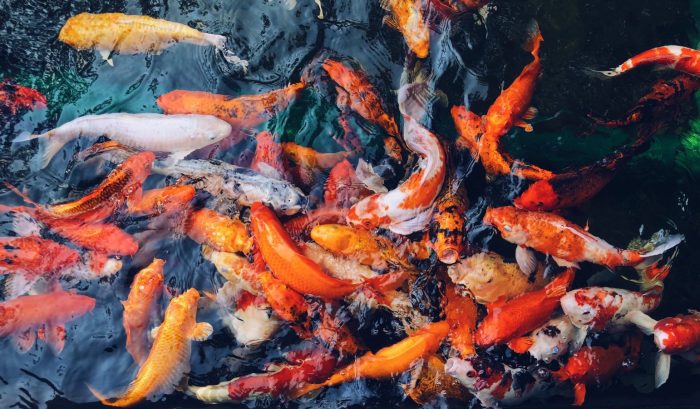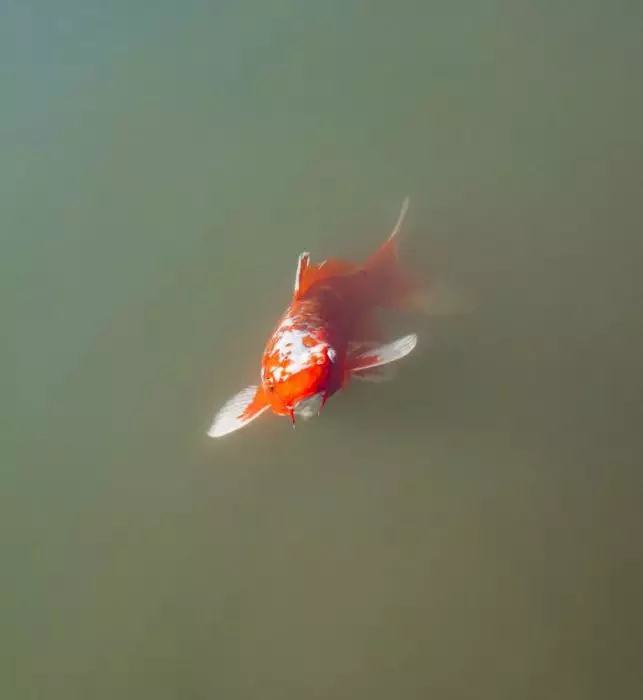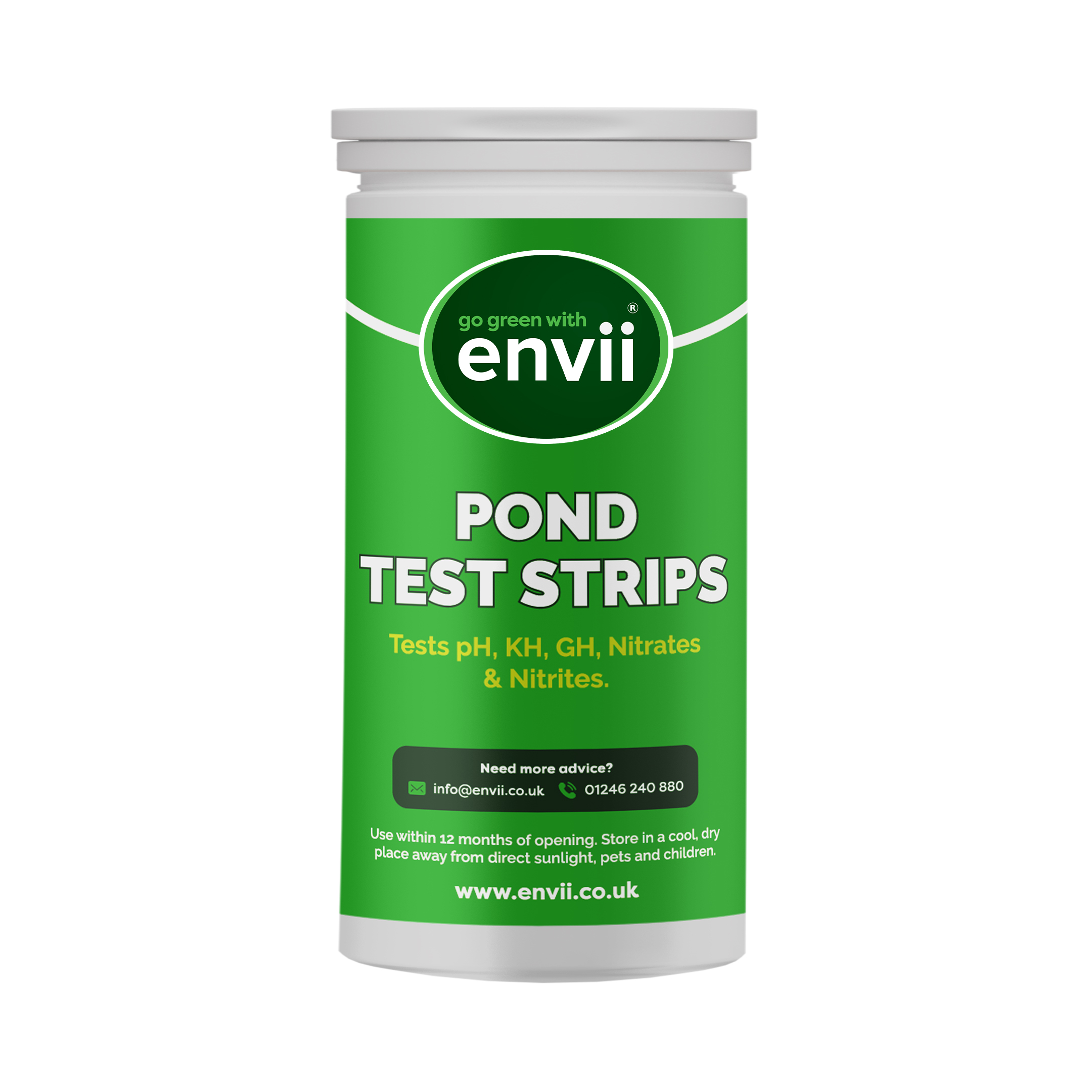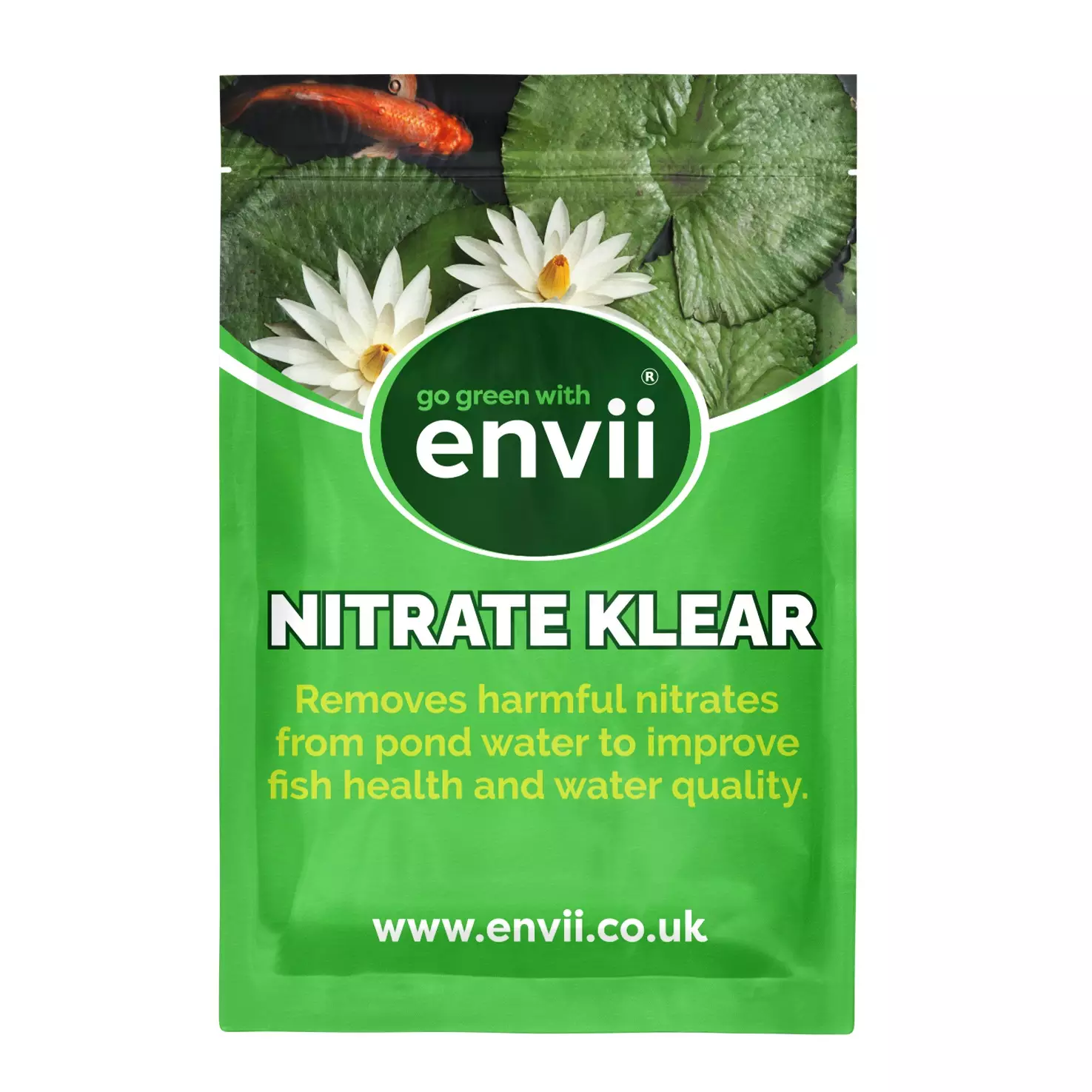There’s a lot of information about pond nitrates and their effect on pond chemistry and fish. However, the information currently available generally underestimates the potential danger excessive amounts of nitrates can cause.
Jump to section:
Are Pond Nitrates Dangerous?
High pond nitrate levels are not only problematic for fish. If nitrates are not removed from the pond, they can also cause the build-up of algae. Leading to other pond problems such as blanket weed and green water.
If you really want your pond to thrive and have the ideal water parameters, read on to discover how and why to minimise your pond nitrate levels.
You can use our new Pond Test Strips – our quick and easy-to-use test strips measure 5 essential water parameters in ponds, pH, KH, GH, Nitrite and Nitrates.

What is the Nitrogen Cycle?
Before diving into the dangers, let’s get a better understanding of what nitrates are and how they develop in ponds. Nitrates are the final by-product of the nitrogen cycle when the natural biology of a pond fails to discard of it.
The nitrogen cycle is the process of when good bacteria, that go by the name of Nitrosomonas break down ammonia. In an effort to remove it through the process of oxidisation and create nitrites.
These nitrites would then further oxidise. They are broken down by Nitrobacter bacteria to create nitrates, a compound composed of one part nitrogen to three parts oxygen.

What Causes Nitrates in Ponds?
Nitrogen is often introduced into a pond system by fish some way or another. Fish, therefore, tend to be the biggest cause of high nitrate levels. However, for many, getting rid of the fish in your pond is out the question.
Crowing, overstocking and over-feeding fish are sure ways that pond nitrate levels get out of control. It’s recommended that pond owners keep a 1-inch fish per square foot of pond space. Keep 1 Koi fish 20inches in size for every 1892 litres of pond water available.
All of these factors contribute to the production of ammonia levels. Through waste produce (through dead food or fish waste) the nitrogen cycle is triggered and eventually leads to the presence of nitrates.

Related Products
-

Envii Pond Test Strips
£11.99Easy to use Pond Test Strips measuring 5 key water parametersAdd to Basket -

Envii Nitrate Klear
£13.99Removes harmful nitrates from pond water.Add to Basket
What are the Symptoms of High Nitrates?
Fish tend to be the primary reason for the presence of nitrates in ponds. It only makes sense that they are a great indication as to whether a pond is clear of or infested by them. Consequences can be very severe for fish if nitrate levels are excessive.
The straightforward signs can be observed in fish behaviour within a pond.
If fish tend to swim at the pond surface gasping or if they often appear lethargic despite being well fed. This may well indicate the presence of nitrates.
Although this is not to say don’t rule out other potential causes. Pond nitrates are often something overlooked when such behaviour can’t be explained. Another common sign may be redness on the fish body such as redness in the fins or other areas.

Do High Nitrate Levels Effect Fish?
As a result of high pond nitrates, fish are susceptible to a condition known as ‘brown-blood disease’. This happens when a fish’ bloodstream is contaminated with nitrates which enter from the water into their blood through their gills. Turning the fish blood into a dark brown colour.
This prevents red blood cells from efficiently absorbing oxygen from the water. This, in turn, explains why fish may be gasping for air at the surface of the pond despite there being adequate oxygen levels throughout the pond water.
Flip-over disease is another condition that fish, in particular goldfish may develop. This is when a fish loses its ability to say upright in the water, in a lot of cases the fish may end up floating helplessly at the surface of the water. This condition can be caused by a variety of things but high pond nitrate levels is a notable culprit when this occurs.

How to Remove Pond Nitrates
A common misconception by pond owners is that water changes are an effective method of removing nitrates. In theory, a partial water change will certainly reduce the number of nitrates but not sufficiently enough to eliminate the pond nitrates problem. The best way to treat high pond nitrate levels is to use a complete solution that will remove nitrates entirely.
Fortunately, nitrate levels are something that can be kept under control with a little care and caution. We advise that if you are suffering from high pond nitrate levels, that you introduce more beneficial bacteria into your pond through the use of Envii Nitrate Klear. Nitrate Klear is able to break down and remove the excess nitrates.
Pond owners have reported happier fish activity and better feeding as a result of using Nitrate Klear.
Ideally, your pond nitrate levels should as close to of 0.00 ppm (parts per million) as possible. Readings above the range of 0.60 ppm or more are dangerous and you should take action to reduce the levels.
You can use our new Pond Test Strips – our quick and easy-to-use test strips measure 5 essential water parameters in ponds, pH, KH, GH, Nitrite and Nitrates.
How to Prevent Pond Nitrates
In addition to using a pond nitrate remover, we recommend 3 habits that will improve the balance of pond water chemistry and manage pond nitrate levels.
Routine Tests
Weekly water tests will give you a useful insight into your pond water chemistry. Pond nitrates should have a reading of 60ppm below. Treat your water with Nitrate Klear as soon as possible if the reading is above this.
General Pond Maintenance
This might seem obvious but simply keeping your pond water clean and clear, physically, can greatly reduce and prevent the build-up of nitrates.
Pond Plants
In a healthy pond environment, free from problems such as blanket weed, pond plants can help to reduce and improve overall nitrate levels. Pond plants also improve oxygenation, creating a better water quality environment for fish.

 Call us on 01246 240880
Call us on 01246 240880 Sign-up and receive 10% off
Sign-up and receive 10% off

